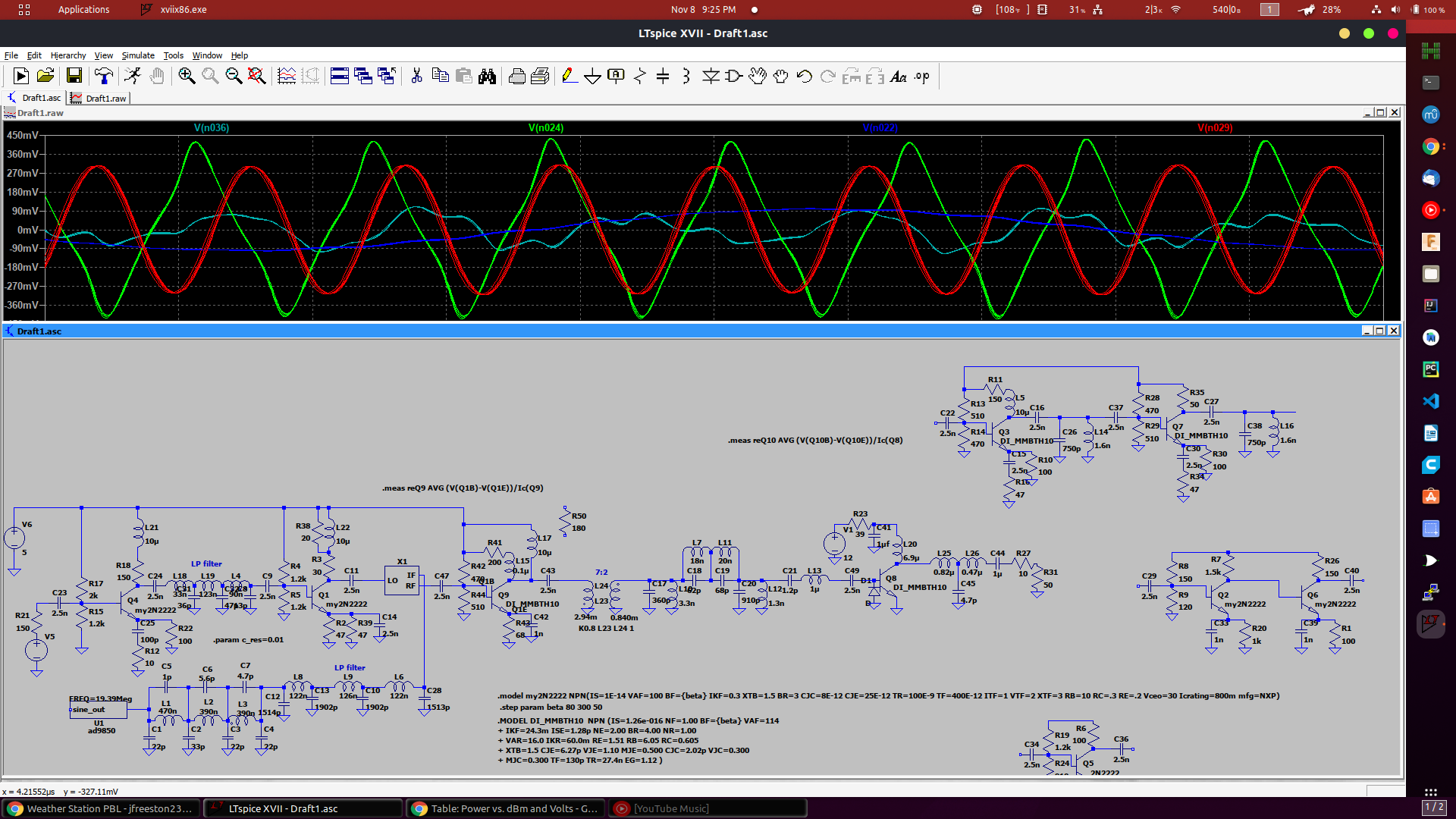The IF will be between ~1 and ~40 MHz, as per the limitations of the AD9850 board.
As the RF output frequency will be 144.390 MHz, it seems that the best LO frequency would be 125 MHz, with an IF frequency of around 19.390 MHz, adding to 144.390. This allows for what seems to be the most separation between fLO + fIF and fLO - fIF while using a common crystal oscillator frequency of 125.000 MHz.
The AFSK will be accomplished via software-based frequency modulation (FM) of the intermediate frequency (IF) with the AD9850 board. This signal will be multiplied with the local oscillator (LO), which will be a 125MHz crystal oscillator chip. In-between these components will reside filtering, matching, buffering/driving, and amplification circuits to allow things to work properly without spewing noise and harmonics across the band. The output power will also be QRP, as the only goal is to reach a digipeater from the transmitter. A directional yagi antenna might become useful for making the most use of the QRP signal (which will ultimately be generated by solar power!!) from a fixed station.
